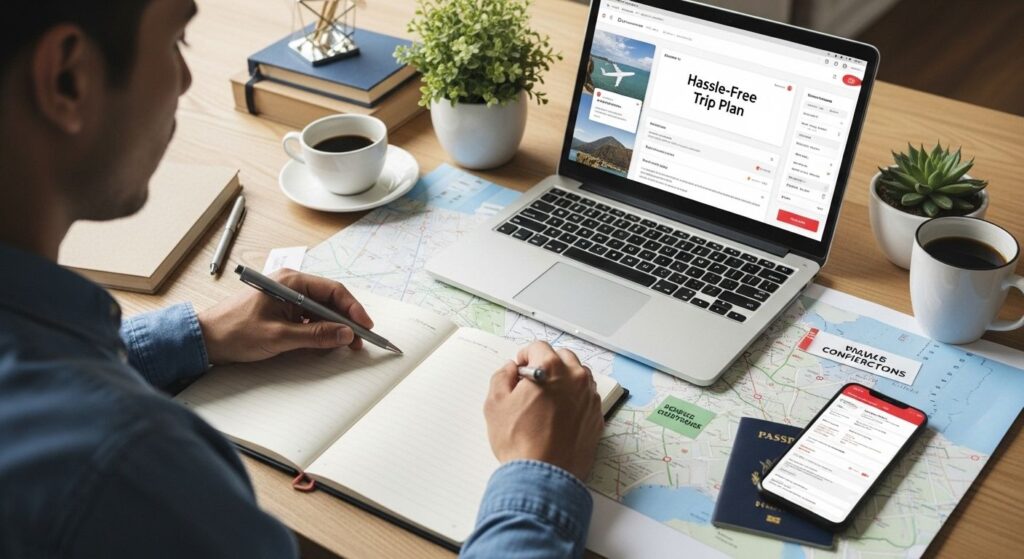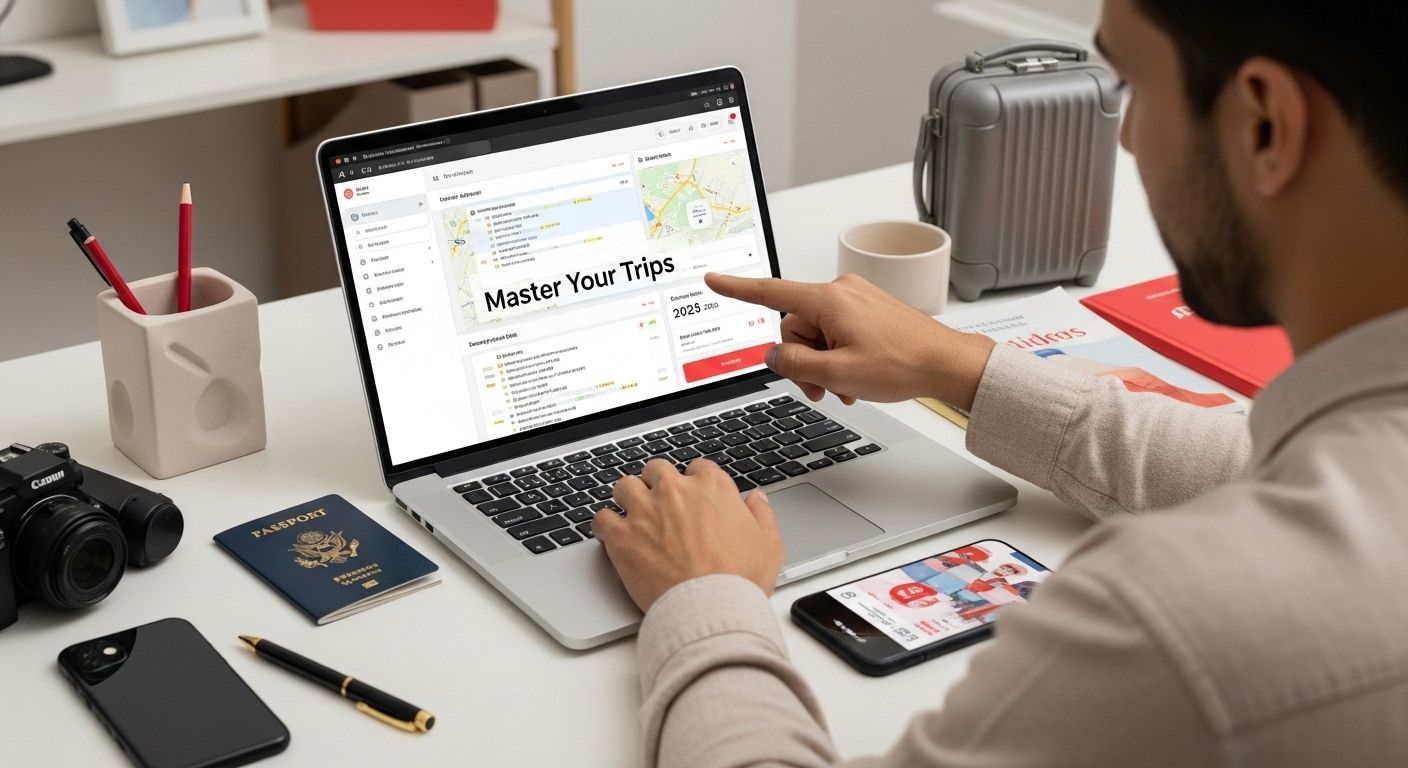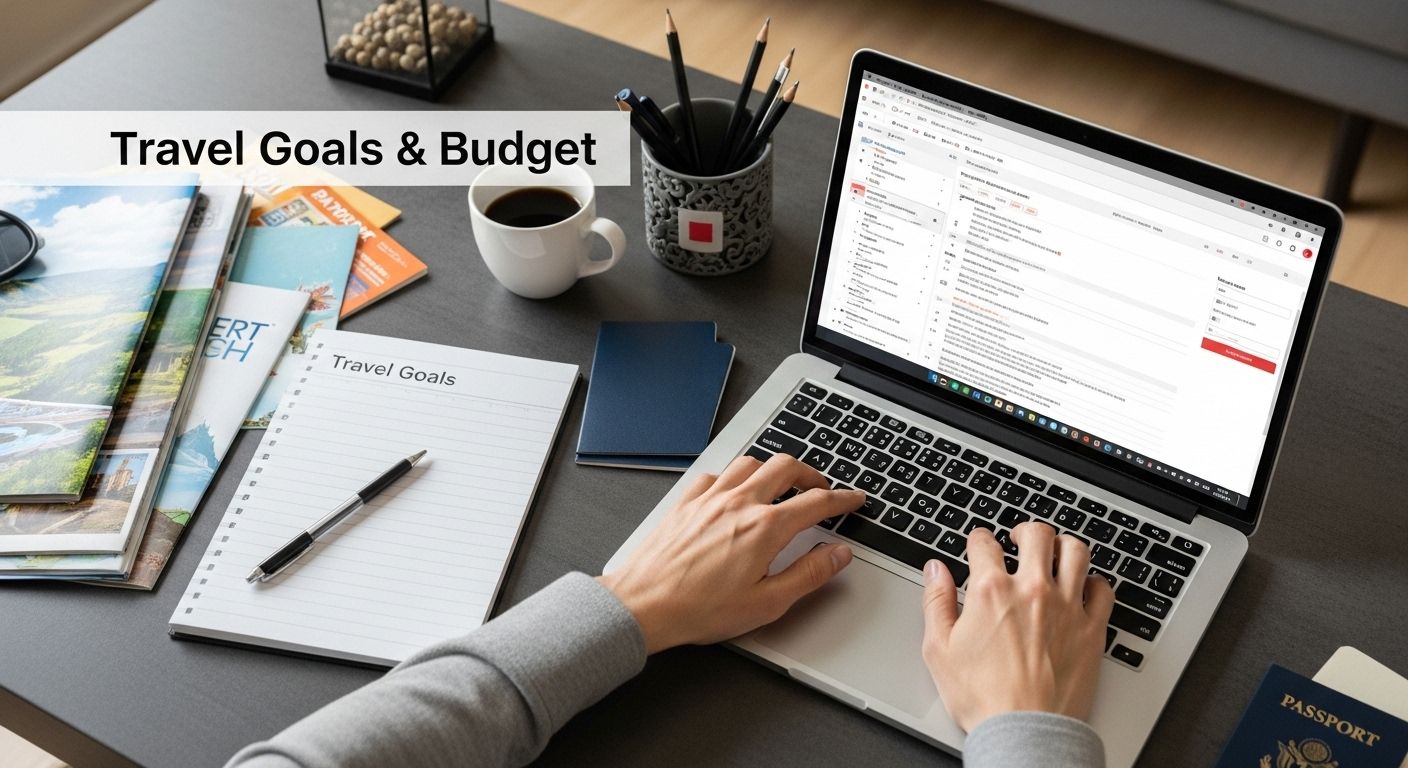Planning a trip sounds simple enough. You just pick a place, book some tickets, and pack a bag, right? Actually, nearly one in three travelers faces major complications because of overlooked details or lack of preparation. The real secret is that the difference between chaotic travel and a trip you’ll remember forever comes down to a handful of expert-backed steps most people skip.
Table of Contents
- Step 1: Define Your Travel Goals And Preferences
- Step 2: Research Your Destination And Gather Essential Information
- Step 3: Establish A Budget And Allocate Funds For Your Trip
- Step 4: Create A Detailed Itinerary And Schedule Activities
- Step 5: Book Accommodations, Transportation, And Activities
- Step 6: Review And Finalize Your Trip Plan Before Departure
Quick Summary
| Key Point | Explanation |
|---|---|
| 1. Define Your Travel Goals | Clearly outline your travel desires to tailor your trip effectively. Understanding your aims guides all planning decisions. |
| 2. Conduct Thorough Destination Research | Gather vital information about location, safety, culture, and transport options to enhance your travel experience. |
| 3. Create a Realistic Budget | Categorize expenses to manage finances effectively and plan for unexpected costs, allowing you to enjoy your trip fully. |
| 4. Develop a Flexible Itinerary | Structure your travel plans to include must-see places while still allowing downtime for spontaneity and exploration. |
| 5. Review All Travel Documents | Before departure, ensure all documents are valid and organized, minimizing potential issues during your travel experience. |

Step 1: Define Your Travel Goals and Preferences
Successful trip planning starts with a crystal clear understanding of your travel objectives and personal preferences. This foundational step transforms a generic vacation into a tailored experience that resonates with your unique desires and expectations. Your travel goals are the compass that will guide every subsequent decision in your trip planning journey.
Begin by conducting an honest self assessment about what you truly want from your upcoming adventure. Are you seeking relaxation, cultural immersion, adventure, professional networking, or a blend of experiences? Consider your available time, budget constraints, physical capabilities, and personal interests. Some travelers crave structured historical tours, while others prefer spontaneous exploration. Understanding your core motivation helps you design a trip that feels authentically rewarding.
Create a comprehensive traveler profile by documenting specific preferences. Think about your comfort levels with different travel styles. Do you prefer luxury hotels or budget hostels? Are you comfortable with public transportation or do you require rental vehicles? What level of cultural engagement interests you most? Some travelers enjoy deep local interactions, while others prefer observing from a distance. Your trip plan should reflect these nuanced personal preferences.
Take time to discuss potential trip elements with travel companions if applicable. Group dynamics can significantly impact trip satisfaction, so ensure everyone’s core expectations are understood and respected. Learn more about crafting collaborative travel plans to navigate potential differences smoothly.
The Centers for Disease Control and Prevention recommends thorough personal assessment as a critical first step in travel preparation. By investing time in defining your travel goals upfront, you create a solid framework that will streamline subsequent planning stages and increase the likelihood of a truly satisfying travel experience.
Step 2: Research Your Destination and Gather Essential Information
Researching your destination thoroughly transforms an ordinary trip into an extraordinary adventure. This critical step goes beyond simply picking a location it involves deep exploration of your chosen destination’s unique characteristics, potential challenges, and hidden opportunities. The more informed you are, the smoother and more enjoyable your travel experience will become.
Start by diving into comprehensive research about your destination’s current conditions. Investigate local climate patterns, seasonal variations, and potential weather challenges that might impact your travel plans. Understanding these nuances helps you pack appropriately and set realistic expectations. Consider official government travel websites, reputable travel blogs, and recent traveler forums to gather current insights. Pay special attention to safety advisories, cultural norms, and local regulations that could affect your journey.
Explore comprehensive travel itinerary strategies to ensure you capture every essential detail during your research phase. Your destination research should include understanding transportation infrastructure, local communication options, currency exchange rates, and basic language survival skills. Look into visa requirements, potential health recommendations, and necessary vaccinations. Connecting with recent travelers through online communities can provide real world insights that official guides might miss.
According to the U.S. Department of State, travelers should register their trip and review comprehensive travel advisories before departure. This proactive approach not only enhances your personal safety but also provides a structured framework for managing unexpected situations. By dedicating time to thorough destination research, you create a robust foundation for a seamless, memorable travel experience that balances preparation with spontaneity.
Step 3: Establish a Budget and Allocate Funds for Your Trip
Creating a realistic and comprehensive travel budget is the financial backbone of any successful trip. This step transforms your travel dreams from wishful thinking into actionable planning, ensuring you have the financial resources to fully enjoy your adventure without unexpected monetary stress. Budgeting is not about restricting your experience but about strategic financial management that maximizes your travel potential.
Start by conducting a thorough financial assessment of your current resources and trip expectations. Calculate your total available funds, considering both savings and potential travel budget. Break down your expected expenses into clear categories like transportation, accommodation, food, activities, emergency reserves, and miscellaneous costs. Be brutally honest about your spending capabilities and potential financial constraints. Use digital budgeting tools or spreadsheets to track and categorize potential expenses, allowing flexibility for unexpected opportunities or challenges.
Discover smart strategies for travel savings that can help stretch your budget without compromising your experience. Consider alternative accommodation options like shared rentals or budget hotels, explore off peak travel times, and look for bundled activity packages. Research destination specific cost averages to create a more accurate financial projection. Some travelers find success by setting up dedicated travel savings accounts or using automated savings apps that gradually allocate funds specifically for their trip.
Remember that a well planned budget is a living document. Build in a contingency fund of approximately 10 to 15 percent above your estimated expenses to handle unexpected costs or spontaneous experiences. This financial cushion provides peace of mind and prevents potential travel disruptions. By dedicating time to meticulous budget planning, you transform financial management from a potential source of stress into an empowering aspect of your travel preparation.
Step 4: Create a Detailed Itinerary and Schedule Activities
Crafting a comprehensive travel itinerary transforms your trip from a loose collection of ideas into a structured, purposeful journey. An exceptional itinerary balances meticulous planning with enough flexibility to embrace unexpected opportunities. This step is about creating a strategic roadmap that maximizes your travel experience while maintaining room for spontaneity and personal discovery.
Begin by mapping out your primary destinations and must see attractions. Analyze geographical proximity and travel times between locations to create an efficient route that minimizes unnecessary backtracking. Consider the pace of your activities different travelers have different energy levels and preferences. Some enjoy packed schedules with multiple daily activities, while others prefer leisurely exploration with ample downtime. The key is creating a personalized rhythm that matches your travel style and physical capabilities.
Learn essential strategies for crafting the perfect travel itinerary that capture both structure and adventure. Digital tools and mobile apps can be invaluable in this process, offering real time mapping, activity suggestions, and time estimation features. Research local transportation options, operating hours of attractions, and potential seasonal variations that might impact your plans. Factor in buffer times between activities to account for unexpected delays, rest periods, or spontaneous discoveries. Group similar activities together to minimize travel time and energy expenditure.
According to the U.S. National Park Service, successful trip planning requires thoughtful scheduling that considers participant needs and logistical constraints. By dedicating time to creating a detailed yet adaptable itinerary, you set the foundation for a travel experience that is both well organized and wonderfully unpredictable. Remember that your itinerary is a living document designed to enhance your journey, not restrict it.
Step 5: Book Accommodations, Transportation, and Activities
Booking your travel components is the moment where your trip plan transforms from theoretical strategy into concrete reality. This critical stage requires a strategic approach that balances cost effectiveness, convenience, and personal comfort. The goal is not just to secure reservations but to create a seamless travel experience that minimizes potential complications and maximizes your enjoyment.
Start by prioritizing your bookings based on your destination research and itinerary. Transportation should be your first focus book flights, train tickets, or rental vehicles that align with your planned route and timeline. Look for options that offer flexibility with cancellation policies and consider travel insurance for added protection. When selecting accommodations, think beyond just price. Evaluate location, amenities, proximity to planned activities, and traveler reviews to ensure your lodging enhances rather than complicates your trip experience.
Explore comprehensive group travel booking strategies that can help you navigate complex reservation processes. Consider bundling activities and attractions tickets in advance to secure better rates and guarantee availability. Many destinations have limited capacity for popular experiences, so early booking can prevent last minute disappointments. Use comparison websites, but also check direct vendor sites for potential exclusive deals or package discounts. Be strategic about the timing of your bookings some activities and accommodations offer significant savings during off peak seasons or with advanced reservations.
According to the Centers for Disease Control and Prevention, comprehensive travel planning includes not just booking logistics but also considering health and safety aspects of your chosen destinations. By meticulously booking your travel components with a holistic approach, you create a robust framework that provides both structure and flexibility for an unforgettable journey.
Step 6: Review and Finalize Your Trip Plan Before Departure
The final review stage is your last opportunity to transform a good trip plan into an exceptional travel experience. This critical checkpoint ensures every detail is meticulously examined and potential challenges are anticipated before you depart. Think of this process as your personal travel insurance policy a comprehensive review that minimizes unexpected complications and maximizes your journey’s potential.
Begin by conducting a comprehensive document audit. Verify that all travel documents passports, visas, travel insurance, and necessary identification are current, valid, and easily accessible. Make digital and physical copies of critical documents, storing them separately from originals. Create a centralized digital folder or physical travel folder that contains all reservation confirmations, tickets, emergency contact information, and important medical details. Organize these documents in a logical sequence that mirrors your travel itinerary, making critical information instantly retrievable.
Explore expert strategies for comprehensive group travel preparation to ensure no critical detail is overlooked. Conduct a final financial review, confirming you have sufficient funds, notifying your bank about international travel, and understanding currency exchange options. Check your mobile phone plan for international coverage or research affordable local communication alternatives. Perform a thorough health preparation review, including necessary vaccinations, prescription medication supplies, and travel health insurance verification. Contact your healthcare provider to discuss any destination specific health recommendations.
According to the U.S. Department of State, enrolling in travel registration programs and understanding local embassy contacts can provide critical support during unexpected situations. By dedicating focused time to this final review, you transform potential travel uncertainties into a well orchestrated, confidently planned adventure. Your meticulous preparation becomes the foundation of a smooth, enjoyable journey that allows spontaneity and excitement to flourish.
Below is a summary checklist to help you review and finalize your trip plan before departure. Use this table to ensure all important steps are completed for a stress-free journey.
| Review Task | Description | Complete? |
|---|---|---|
| Travel Documents Audit | Verify all passports, visas, insurance, and IDs are valid | |
| Digital & Physical Copies | Make digital/physical copies and store separately | |
| Centralized Travel Folder | Organize confirmations, tickets, medical info, emergency contacts | |
| Financial Preparation | Confirm funds, notify bank, check currency exchange options | |
| Communication Plan | Check phone plan or research affordable local options | |
| Health Readiness | Ensure vaccinations, medications, and health insurance are ready | |
| Registration & Local Support | Enroll in travel registry, note embassy/consulate contacts |
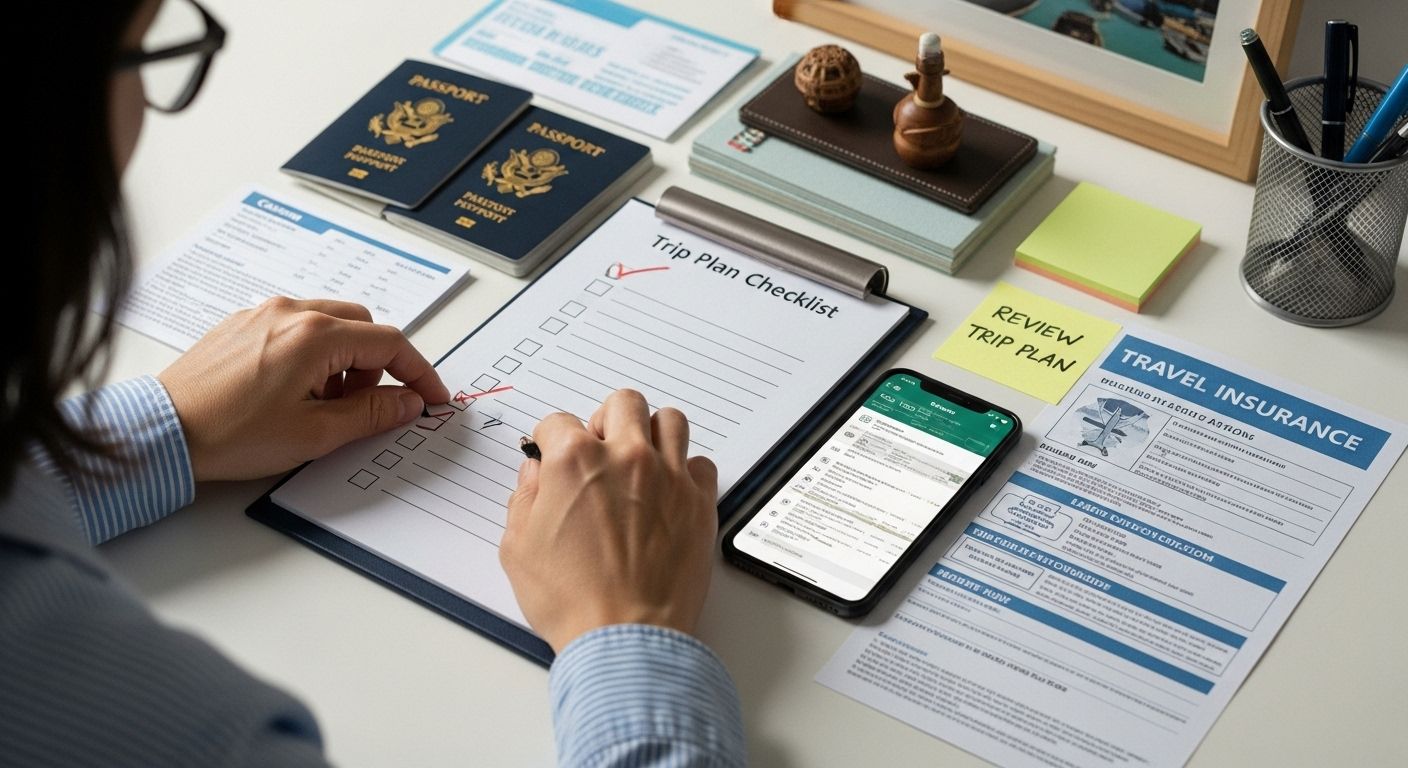
Say Goodbye to Travel Planning Stress—Discover Your Ultimate Hassle-Free Solution
Do you feel overwhelmed juggling spreadsheets, endless travel research, and scattered booking confirmations? This guide showed how setting clear goals, researching destinations, managing budgets, and building detailed itineraries are vital to stress-free travel planning. Yet, even with the best tips, turning plans into reality often steals your energy—leaving less time for excitement and more for frustration. Imagine a platform where you can generate a custom itinerary based on your interests, visually organize activities on a smart map, and keep all your travel details in one place.
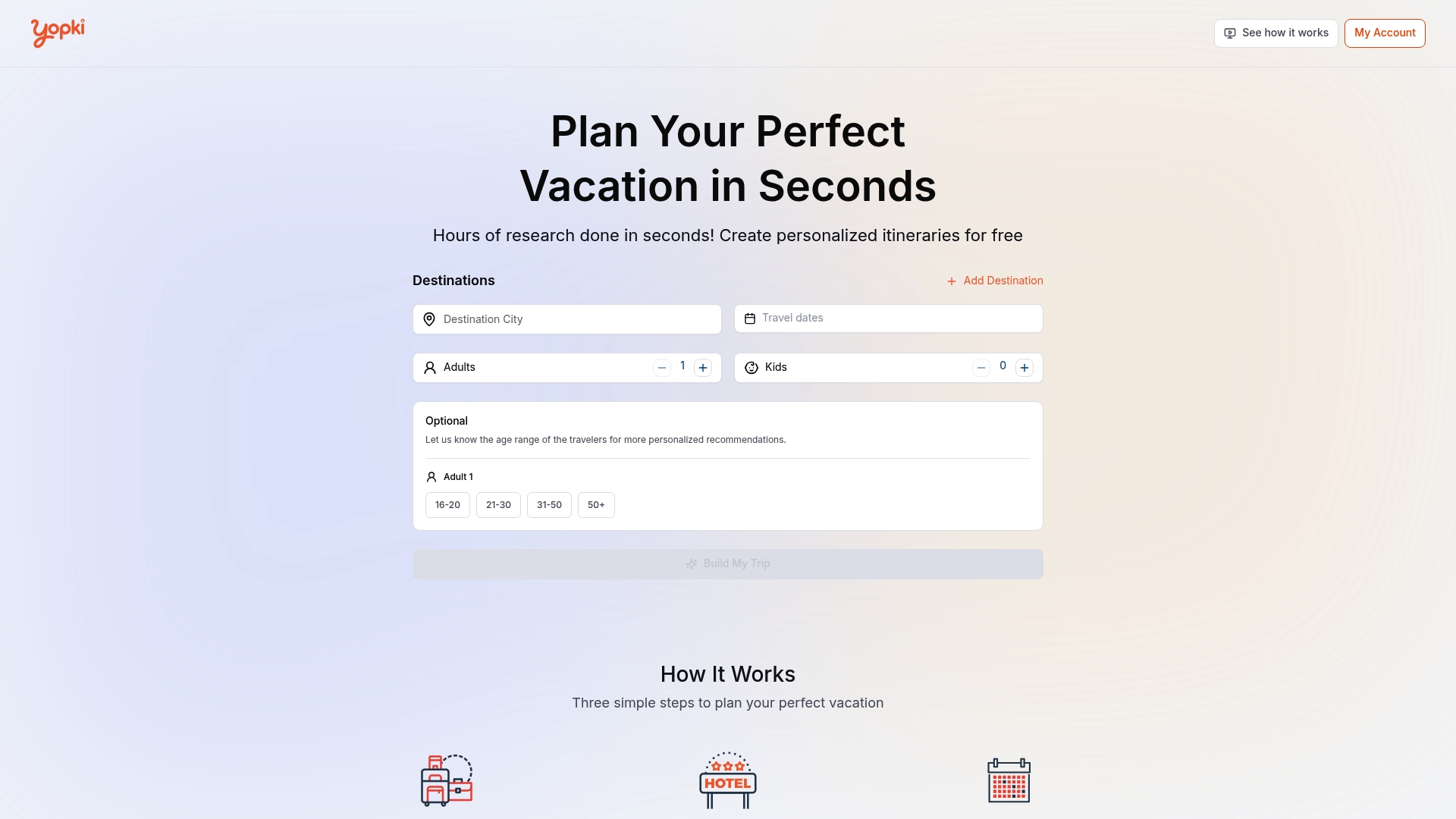
Ready to leave behind the hassle and uncertainty? Try Yopki, the all-in-one travel app that turns complicated planning into simple, joyful preparation. Instantly create, edit, and organize your dream vacation—including flights, hotels, and tickets—all in one smart hub. Take the next step to a smooth, unforgettable trip with your personalized travel planner. Say yes to fewer worries and richer memories. Start your journey now at Yopki’s official website.
Frequently Asked Questions
What are the first steps to planning a hassle-free trip?
Successful trip planning begins with defining your travel goals and preferences. Understand what you want from your trip, assess your available time and budget, and create a traveler profile that reflects your unique interests.
How can I effectively research my travel destination?
Thorough research involves exploring local climate, safety advisories, cultural norms, and transportation options. Utilize official government travel websites, reputable travel blogs, and recent traveler reviews to gather essential information about your destination.
What should I include in my travel budget?
Your travel budget should cover all expected expenses, including transportation, accommodations, food, activities, and emergency reserves. Be honest about your financial capabilities, and consider setting aside a contingency fund to manage unexpected costs.
Why is a detailed itinerary important for my trip?
A detailed itinerary provides a structured roadmap for your journey, helping you maximize your travel experience while allowing for spontaneity. It organizes destinations, activities, and travel times, ensuring a balanced pace that suits your travel style.
